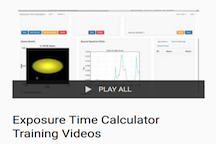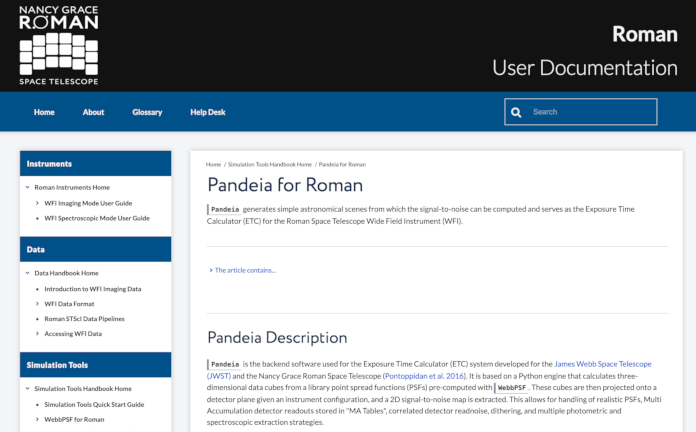Welcome to the Roman Space Telescope WFI Exposure Time Calculator
News
Welcome to version R2025.5 of the Roman WFI ETC! This release features ETC calculations using two new expansion functionalities. One functionality is ‘Expand over Flux of Source’, which allows users to expand a calculation over the flux values of a source in their selected scene. The other functionality is ‘Expand over Detectors’, which allows users to expand a calculation over all possible detector choices of a selected calculation. These new functionalities are available under the ‘Expand’ dropdown menu at the top of the workbook. In addition, the detectors are now named WFI01 through WFI18.
All old workbooks from R2024.12 and earlier will be marked with the previous version number in the "Ver" column and marked as read-only. To make changes, users need to copy the old workbook using [copy] under "Options". The same calculations will be run with the new version of the ETC.
The ETC calculations are based on the WFI data from Cycle 9/Phase B and v1.0 of the Roman Technical Information repository. This version of the Roman WFI ETC does not include the Inter-pixel capacitance (IPC) effect, which will be re-evaluated in the future. See the Release Notes for details, and be sure to review the Known Issues for this release.
DISCLAIMER
- The WFI detectors are undergoing active characterization, therefore the data currently used by the ETC are based on the current best knowledge from the ground-based testing. Further updates will be made as tests progress and the mission launches.
- The main difference users familiar with the JWST ETC will find with the Roman WFI ETC is the addition of MA Tables, the equivalent of "readout patterns" in JWST. MA Tables are a limited set of pre-defined WFI readout instructions. The user must select from the provided MA Tables to carry out an observation.
Readme
- Log in with MyST, work anonymously, or enter Quick Start mode.
- The Roman ETC allows you to have multiple folders, with multiple workbooks within each folder. Each workbook allows you to define sources, place them in scenes, and use the scenes in calculations. Sources may be used in multiple scenes, and scenes may be used by multiple calculations, which will be automatically recalculated to reflect any changes made. Reasonable default values are provided for all fields.
- Folders and workbooks for logged-in users are automatically saved and will be available in your workbook list upon return. If you are working anonymously, you can log in with MyST at any time, and your workbooks will be transferred to your user account. Anonymous users are limited to 10 workbooks.
- For ETC Documentation, see Help → User Guide. For help or to provide feedback, contact the Roman Help Desk (Help → Help Desk).
- Be sure to read the Known Issues page for important information about system accuracy, limitations, and workarounds.
We recommend the use of Chrome, Firefox, Edge or Safari. The ETC is not well tested on other browsers.
The use of highly sampled spectra may result in significantly longer run times for spectroscopic calculations, with the longest run times for higher resolving powers.
Occasionally, the UI may appear to be unresponsive or stalled. Try reloading the page; this often clears the issue.
System performance depends on usage/load; if the system appears unresponsive, wait 1-2 minutes. Please avoid repeatedly clicking, because this may make your experience worse. If the system remains unresponsive, contact the Roman Help Desk.
Accuracy of ETC CalculationsThis version of the ETC is intended to help users plan observations for the Nancy Grace Roman Space Telescope's Wide Field Instrument (WFI). The WFI detectors are undergoing active characterization and the ETC approximates our current best knowledge and understanding of the performance of the instrument, based on ground-based thermal vacuum testing measurements and calibrations. Users should exercise appropriate caution when interpreting results from the ETC. A number of known issues exist, which may affect predicted sensitivities. See Known Issues for additional details.
The ETC is not intended to be a complete observation simulator, and some higher-order effects are not accounted for, such as off-axis distortion effects.




 Mark Sienkiewicz (1963 - 2015)
Mark Sienkiewicz (1963 - 2015)